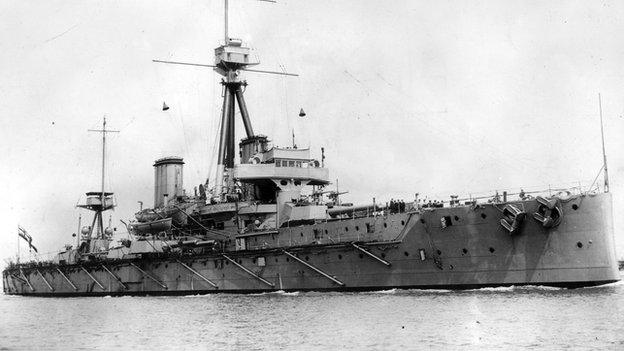World War One: Chapel Bay fort's role in naval blockade
- Published
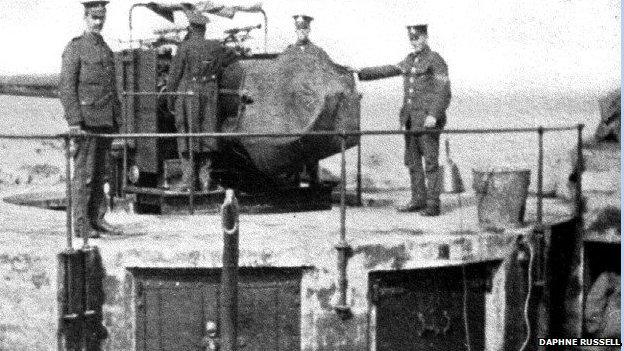
The six-inch Chapel Bay gun in 1917 - photo courtesy of family of the late Daphne Russell
Throughout World War One the six inch guns on Chapel Bay Fort guarding the approach to Milford Haven never fired a shell in anger.
Nevertheless Chapel Bay was part of a system responsible for the deaths through starvation, of an estimated three quarters of a million German civilians.
Built in 1890 to protect against French invasion, by WW1 the Pembrokeshire fort was used to guard impounded ships which the Royal Navy suspected of carrying supplies to the Central Powers.
Britain's naval blockade was so successful that some historians believe it played an even bigger part in the eventual victory than did the fighting on the Western Front.
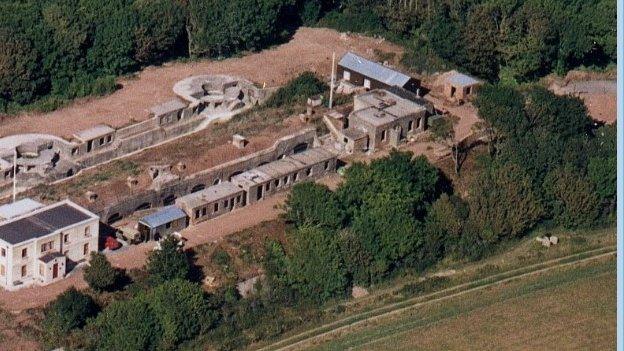
Aerial view of fort, which is now being restored
For most of the 20th Century Chapel Bay Fort lay in ruins, but now with the help of European, Welsh government and Cadw funding, George Geear is restoring it to how it would have looked to the servicemen based there during WW1.
"When the Royal Navy captured a ship in the Western Approaches they'd board it and escort it into Milford Haven, where the goods it was carrying would be confiscated.
"They'd be anchored directly opposite the fort's six-inch guns, which could fire several rounds a minute, so unsurprisingly nobody ever tried to make a run for it.
"It must have made for quite a tedious life for the men on the windswept gun emplacements. One would have to man the gun around the clock, while his colleagues took it in turns to shelter over a stove, in chambers specially cut into the walls."
Although the British confiscations did draw criticism - especially from America - they were nothing compared to the international condemnation of Germany's naval policy.
Because whilst the Royal Navy would intercept shipping and escort it to a British port, by 1917 Germany began unrestricted submarine warfare, whereby even neutral vessels were torpedoed without warning.

FORT TIMELINE
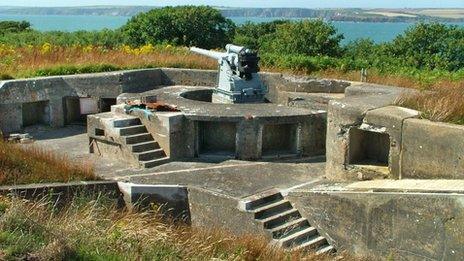
The aim is to reopen the fort to the public in August
1817: A two tier gun battery is proposed to be built into coastal slope, which would have been armed with 12 guns
1858: A report to Parliament on sea defences at Milford Haven proposes further defences, including 10 guns at Chapel Bay and barracks for about 150 men.
1862: Approval to build battery of six guns
1869: A design is produced for six guns and a barracks for 60 men.
1891: Battery armed with three guns completed
1898: War Office approval to build new three gun battery
1901: The fort is reconstructed and re-armed
1914-18: Chapel Bay served as the "Examination Battery" for the Haven with guns and lights manned 24 hrs a day.
1932: The Army leaves Chapel Bay Fort and the site is eventually sold.
1939-45: Anti-aircraft emplacement and searchlight battery/control centre.
1959: Chapel Bay Fort scheduled as an ancient monument by Cadw.
2007: Plans to restore and open the fort as a visitor attraction

U-boats sunk 13 million tons of shipping bound for Britain, with the loss of around 5,000 lives.
In April 1917 it was thought that Britain had less than six weeks food reserves.
However Swansea University WW1 expert Dr Gerry Oram believes the notion that Britain's approach was somehow more humane is an utter misconception.
"This is yet another prime example of how Britain was masterful at manipulating public and international opinion, while German diplomacy was naive at best.
"Much was made of the 5,000 seaman lost in U-boat attacks, though you have to weigh that up against the 772,000 German civilians who died as a consequence of the British blockade."
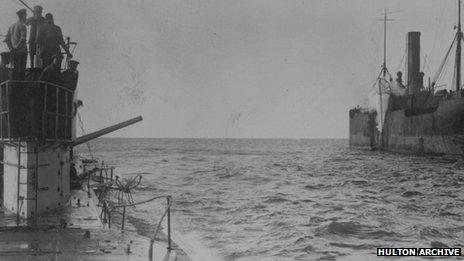
A German U-boat opens fire in 1915
The adoption of unrestricted submarine warfare meant that the USA's entry into the war became almost inevitable.
However German military leaders had gambled that they'd be able to sink enough shipping to force Britain into surrender within six months, before the Americans were able to mobilise their forces.
Dr Oram contends that rather than a show of aggression, the German policy demonstrates just how much they were feeling the pinch themselves.
"I think that rather than ruthlessness, the German policy of unrestricted submarine warfare can be seen as an act of utter desperation. Britain's blockade was simply more effective than Germany's.
"It's no exaggeration to say that Winston Churchill's decision as Lord of The Admiralty to authorise the blockade, was 'The' defining moment of the eventual allied victory."
George Geear is hoping to be able to open the renovated Chapel Bay Fort to the public in time for August's centenary of the beginning of WW1.
It will house one of Britain's largest collections of weaponry, from Victorian cannon to 1960s armoured vehicles.
However Mr Geear says it's important that visitors take a moment to remember the fort's more grisly part in history.
"All too often the media and many military museums glorify a one-sided portrayal of events with the moral superiority of the victors.
"But at the same time war has brought about some of the most important social, medical and technological developments of the modern age.
"I think remembering the fort's role in WW1 will help us to strike a balance between these points."
- Published24 February 2014
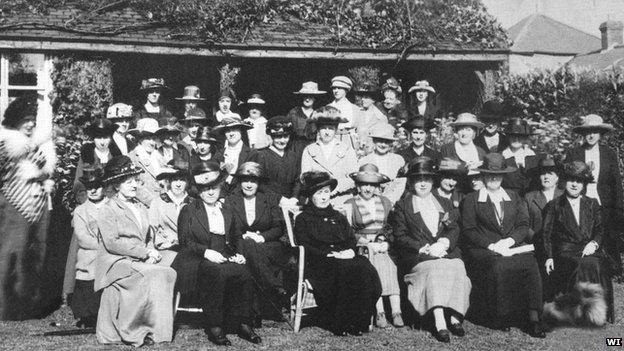
- Published2 June 2014
